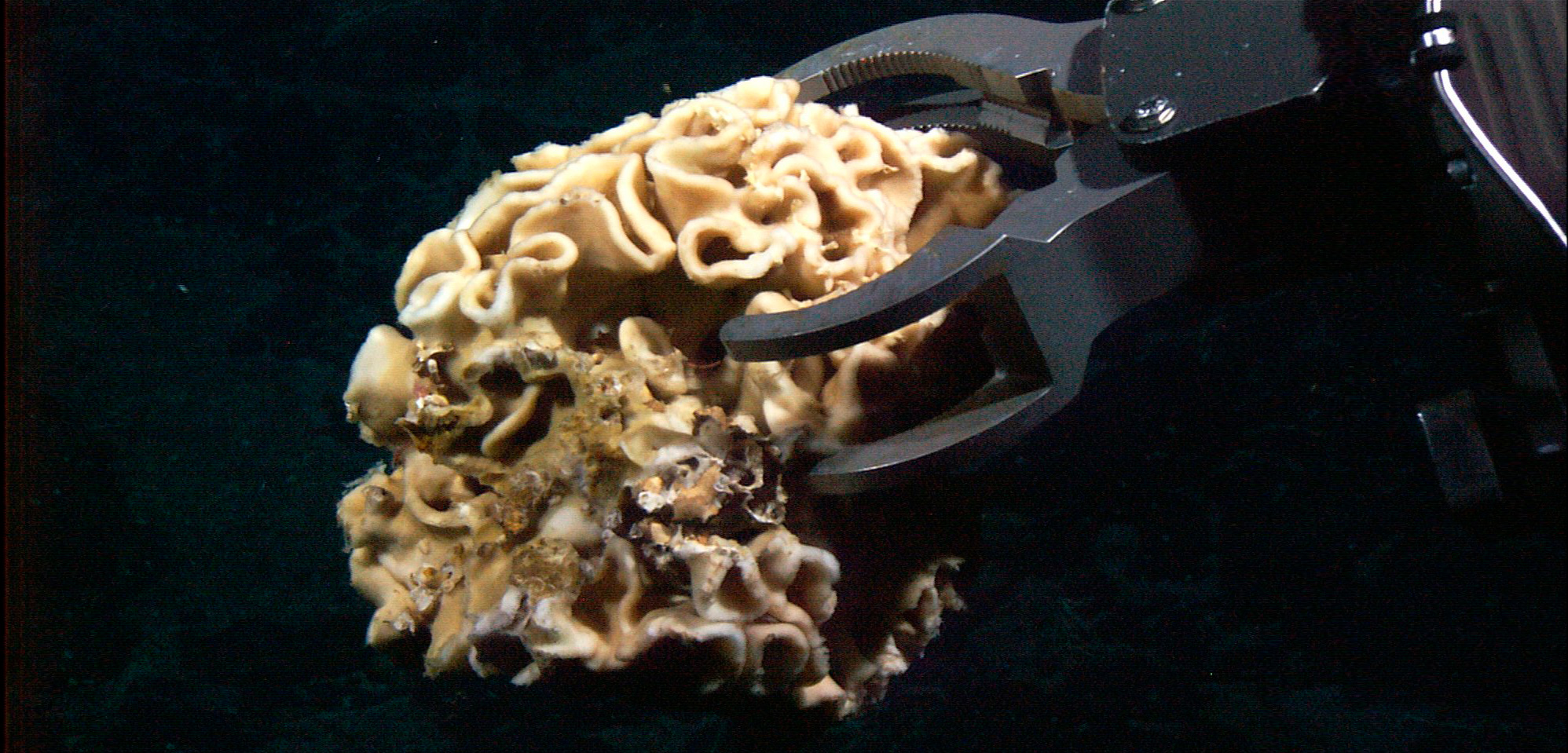The Deep Ocean’s Free Real Estate
At the bottom of the deep sea, single-celled organisms grow to unusual sizes and provide hiding places for many creatures, including developing fish eggs.
Article body copy
Looking for a daycare? Happen to be a snailfish? Scientists believe that a kind of ancient, oversized marine protist called a xenophyophore may have just the place.
Xenophyophores live on the ocean floor where they grow in a bewildering range of shapes: some resemble a head of lettuce, while others have tightly packed whorl ridges and look like brains. Others seem more like underwater cacti. But each xenophyophore is made up of only a single cell. Unlike other single-celled organisms such as amoebas, which tend to be microscopic, xenophyophores can grow to be the size of grapefruits.
In the food-poor, predator-rich environment of the seafloor, xenophyophores have long played a crucial role. Many surround themselves in rigid structures that they build from sediment and fecal matter. Previous research has shown that the nooks and crannies these structures create provide hiding places for crustaceans, worms, and brittle stars. Microbes thrive inside the xenophyophore homes, too, providing food for larger inhabitants. “They’re like little apartment houses, if you will, with a built-in food supply,” says Lisa Levin, a marine ecologist at Scripps Institution of Oceanography at the University of California San Diego.
Levin has long been interested in how xenophyophores shape ecosystems, so when her team extracted these protists from the ocean floor off Costa Rica during a research cruise last year, she decided to see if there were any other ocean inhabitants hiding inside. This led Levin and fellow Scripps researcher Greg Rouse to a discovery: xenophyophores can also serve as a nursery for developing snailfish eggs.
Jennifer Gardner, who studies snailfish as a graduate student at the University of Washington, says their eggs are known for showing up in many unlikely places: inside sponges and corals, and even in the carapaces of king crabs. These shelters provide protection from predators, but they also create a flow of water that provides oxygen the eggs need to develop. Despite decades of finding snailfish eggs in odd places, researchers aren’t sure how snailfish manage to get their eggs into these other organisms.
James Orr, a biologist at the US National Oceanic and Atmospheric Administration’s Alaska Fisheries Science Center, says that the snailfish eggs Levin and Rouse discovered hiding in xenophyophores may simply have drifted in after they were deposited nearby. But he and Gardner agree that because xenophyophores are stationary, underwater cameras aimed at xenophyophores might let researchers catch snailfish in the act of hiding their eggs.
Although each xenophyophore is made from only one cell, their role on the ocean floor is far from singular. From forming microbial hotspots to helping fish raise their young, these oversized protists shape the deep ocean in ways that scientists are still discovering.

